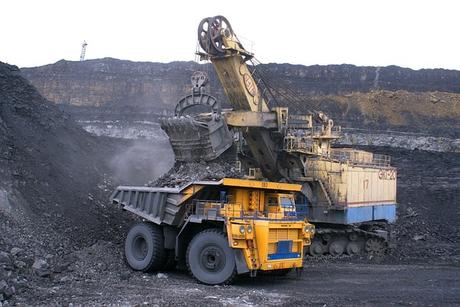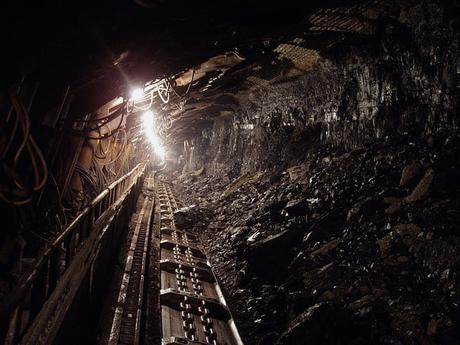Mining is commonly defined as the extraction of valuable minerals and other geological materials from the earth. It is one of the major economic activities that contribute to the advancement of economies worldwide as the majority of countries that want to grow their economic muscle usually opt for the exploitation of natural resources through mining.
In North America, for example, the mining industry employs an estimated one million people and the industry in 1998 was estimated to be worth way more than $70 billion. In countries such as Peru and South Africa, mining activities contribute more than 11% and 27.4% of GDP respectively. Nonetheless, the mining sector has a lot of negative health and environmental impacts and sometimes the health cost of the mining activities can outweigh its benefits.

The mining industry generates wastes containing high concentrations of metals and metalloids which are highly toxic to the environment. Moreover, the continued use of the traditional methods of mining intensifies the emission of toxic and non-ecofriendly products. This article details the causes and effects of mining on human health and the environment.
Various Causes of Mining
1. Advancement in technology
With the current advancement in technology and technological products such as cell phones, computers, and machinery among others, it is impossible to do away with mining. The demands of minerals from technological companies are increasing and consequently the need for mining activities to meet these demands.
For example, data from the US Mineral Information Institute indicate that in a single year, there are approximately 130 million cell phones decommissioned by their owners. These cell phones contain an estimated 46 metric tons of silver, 2100 metric tons of copper, 2 metric tons of palladium, 46 metric tons of silver, and 0.04 metric tons platinum.
The data shows that the amount of minerals required is still high each year. To indicate how massive the industry is, studies conducted by World Economy Forum prove that the industries which have ventured into mining and metal influence a one trillion economy.
2. Urbanization and increased population growth
The world’s population is ever growing. This increase coupled with modernization and income growth leads to more demands for residential and working building spaces, transportation vehicles, and consumer products. As a result, the need for more mined products increases.
3. Few substitutes for minerals
Suggestions mainly indicate that the mining activities can only decrease if there are substitutes for the mined products. But since substitutes are highly lacking, it will remain an uphill task to reduce mining activities. Recently, some companies are replacing metal with carbon fiber and gas for other fuel sources.
Despite the truth and the practicability in this substitution, studies by Yale University show that there is no such thing as a perfect replacement of all uses of a single item.
4. Mining is an economic foundation in some countries
Most developing countries depend on mining for their economic growth. The International Council on Mining and Metals (ICMM) report that approximately 70 countries heavily rely on the mining industry. Further studies indicate that mining activities constitute 60 to 90 percent of the total foreign direct investment for most countries in the category of low-middle income.
5. With modernity and technological breakthroughs, the industry is becoming more and more sustainable
Top mining industries are making breakthroughs in technology and investing heavily in it as well. An example is a current use of sensing technologies and Internet of Things (IoT), autonomous systems, use of drones, simulations, and adaptive supply chains. This silent reconnaissance in technological advancement is attracting new professionals and is also meeting the demands of the local society in terms of providing a sustainable operation.
Effects of Mining on Human Health
1. Respiratory complications
Studies indicate that mining is one of the most perilous occupation in the world in terms of injuries and fatalities, and also due to the long term health effects associated with it. Long term effects include respiratory problems such as pneumoconiosis, asbestosis, and silicosis.
The health effect of mining is based on the type of mining activities namely deep mining and the open cast methods of mining. A coal mine produces lots of dust which if inhaled, can lead to the black lung disease among the miners and other people living within the surrounding region.
Due to blasting and drilling, the fine mineral particles of dust are inhaled and accumulate in the lung causing pneumoconiosis. And when miner inhales excessive amounts of quartz or crystalline silica, he or she is likely to suffer an irreversible disease called the silicosis.
In addition, miners and people living around areas where radioactive gases such as Radon are emitted can suffer from long term respiratory diseases such as lung cancer. Chronic exposure to welding fumes can also cause lung irritation and poisoning, and inhalation of mercury can lead to mercury poisoning.
2. Injuries and fatalities
In 2006, a coal mine accident in China collapsed and caused the death of more than 4,700 people. Such accidents have been recorded in many mining sites across the world. There are reports of people injured by the rails that transport them to and from the ground. Others have had rocks collapsing on them as they mine.
Plus, some mining activities are associated with a lot of heavy lifting and shoveling which can cause back injuries. Studies indicate that 25 percent of the total injuries reported in mining are due to slips and falls.
3. Cancers due to radioactive material exposure
People in industries that mine radioactive elements or in fields that generate hazardous gases such as Radon are in danger of having terminal diseases, especially cancers. Also, people living in these regions will be affected by radioactive materials.
4. Poisoning and organ damage due to heavy metals exposure
Mining activities ordinarily generate high concentrations of metals and metalloids. When these metals leach they can reach the groundwater and surface water and find a way into the food chain and even climb up the food chain through bioaccumulation. If a metal such as mercury is ingested it can lead to poisoning, organ damage, and even death in high concentrations.

Effects of Mining on the Environment
1. Water pollution
If proper precautions are not taken, mining can have adverse effects on both the surface and groundwater. Due to the high amount of chemicals that mining activities generate; unnaturally high concentrations of arsenic, mercury, and sulfuric acid will be deposited in the water bodies.
Massive contamination can also occur due to the water generated from the mining sites. This water is concentrated with high amounts of chemicals used for mining as well as metals from the ground ore. Also, water produced from mine cooling, aqueous extraction, and mine drainage among other mining activities further augment the contamination of water surfaces.
Heavy metals can be transported into the groundwater by runoff leading to devastating effect if consumed by humans or animals. Examples are the Britannia Mine – a former copper mine in Vancouver, and the Tar Creek mibe in Picher, Oklahoma which reportedly has high levels of heavy metal contamination.
2. Erosion
The exposed hillsides, tailing dams and mine dumps become eroded through mining activities. Siltation of drainages and rivers due to erosion contribute to environmental degradation. An example is the Ok Tedi Mine located in Papua New Guinea. Moreover, mining activities may render farming or grazing land unproductive. Shallow extraction techniques, geological discontinuity, and weak overburden can cause sinkholes which create a large depression on the surface of the mining area.
3. Effects on biodiversity
When mining, extensive areas of land and vegetation are cleared. The viability of the land for farming activities deteriorate and animals loss their habitats. Biodiversity losses are, therefore, experienced in the area due to habitat modification in terms of factors such as pH changes and temperature changes.
The endemic species of the area will, as a result, be highly affected owing to their sensitivity to the environmental changes. One important thing to note is that the impact of the mining activities on biodiversity will depend on bioavailability and morbidity of the contaminant. When contaminants have low mobility, they will stay inert in the mining area. Those that have high mobility will move into another area occupied by organisms leading to poisoning.
4. Biomagnification
Another critical concern of mining to the environment is Biomagnification. Animals in the lower levels of the food chain and living near mining areas will consume heavy metals. These animals are then consumed by those above them in the food chain and this continues until to the top of the chain. The toxic metals will move gradually from the consumer to the top of the chain through the feeding relationship.
5. Effect on aquatic animals
Mining activities can cause direct poisoning of the marine animals when the toxic chemicals and heavy metals are transported through run off to the water bodies. Due to the bioavailability of these hazardous materials in the water, they can modify the pH affecting the plants that the aquatic animals feed on.
There is also physical effect caused by the silt deposited in water surface as a result of mining which can lead to reduced visibility and clogging of respiratory surfaces of the aquatic animals.
6. Destruction and loss of vegetation cover
Surface mining results in deforestation and this has long term effects even after the mine has been decommissioned and the land refilled with soil and replanted. Besides, the majority of plant species have a very low tolerance to high concentrations of metals in the soil except for grass.
Plants that are intolerant to such conditions will fail to germinate in the reclaimed areas. Plants in such areas are normally affected through direct poisoning, modification of pH, clogging of their leaf surfaces by dust particles, or unavailability of nutrients.

